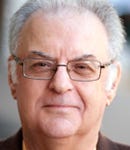BEGINNINGS OF MANY FIRSTSBEGINNINGS OF MANY FIRSTS
BOISE, Idaho -- Joe Albertson went into the grocery business to fill a basic human need."Regardless of the economic climate, people will always have to eat," he told SN in a 1975 interview.Starting with a single store here in 1939, Albertsons has become the nation's second largest conventional supermarket chain, with nearly 1,400 supermarkets and 750 freestanding drug stores in 31 states accounting
November 24, 2003
ELLIOT ZWIEBACH
BOISE, Idaho -- Joe Albertson went into the grocery business to fill a basic human need.
"Regardless of the economic climate, people will always have to eat," he told SN in a 1975 interview.
Starting with a single store here in 1939, Albertsons has become the nation's second largest conventional supermarket chain, with nearly 1,400 supermarkets and 750 freestanding drug stores in 31 states accounting for sales of more than $35 billion.
Joe Albertson was working for Safeway in Kansas when he was sent to Idaho to open a store here in April 1939. Three months later he decided to open his own store.
But he had saved only $5,000 -- not enough to open a store on his own -- so he entered into a partnership with two other individuals: L.S. Skaggs, a former Safeway divisional vice president who had begun opening Payless Drug Stores, and Tom Cuthbert, Skaggs' accountant. Under terms of their agreement, Albertson and Skaggs would each put up 45% of the cost of the store and Cuthbert would toss in the other 10%.
But with only $5,000, Albertson was still short of the $12,500 he needed for his share, "and Mr. Skaggs wouldn't loan me the difference," he recalled in the SN interview. "I suppose he figured that if I had to scrounge around for the money on my own, it would prove to him I was goddamn serious about going into business."
Albertson borrowed the $7,500 he needed from his wife's aunt. "When we incorporated [several years later], I told her I could pay her the $7,500 plus interest in cash or I could give her the money in stock," he said. "She took the stock, and by the time she died, it was worth $750,000. She was a wise woman."
A photo of his aunt was prominently displayed on an end table in Albertson's office.
The first Albertson's Food Center was 10,000 square feet -- larger than any of the other stores in town and billed as "Idaho's largest and finest food store" -- and it had to compete with six Safeways in the Boise area. But Albertson was determined to succeed, he said. "When you have every cent you own or can borrow in your business, and you're young and you have a lot of energy, you just don't let someone back you against the wall very easily," he told SN.
"To compete, we offered a whole list of firsts at the store -- the first scratch bakery in the area, the first magazine rack, the first hot roasted nut machine, an automatic doughnut machine and a popcorn machine. And we also made our own ice cream.
"The competition was hell-bent on seeing we didn't get started, and the result was a really severe price war. Although it was tough for us, we went right with them and worked the hell out of the ice cream, the bakery, and the meat and produce departments."
The price war lasted from July through December 1939, Albertson recalled, "and by the end of the year we had made a profit of $9,711. I know our competitors lost a lot more than we made, and they were the ones who let up on the price pressure."
Encouraged by their initial success, Albertson and his partners opened a second store, in Nampa, Idaho, in June 1940, and a third store, in Caldwell, Idaho, that December.
"Our thinking was that as long as our stores were successful, we would keep going forward," Albertson told SN. "Our employees were on a bonus system -- I've always believed in that, and I still do. People who help create your success truly deserve to share in it."
By the end of 1944 Skaggs and Cuthbert told Joe Albertson they were more interested in investing money in their drug store business than in supermarkets, "so I bought them out for cash and a note worth $100,000, and it didn't take me long to pay them off," he said.
By the end of 1951 Albertson had 17 stores. "When you're young and you have a lot of good people working for you and they are looking for opportunities to advance, then you've got to keep growing as long as you're successful and making money," he told SN.
By 1964 Albertsons was the nation's 25th largest chain, approaching 150 stores, "and we were getting merger offers. Lucky wanted to acquire us, and Jewel also expressed some interest. I guess I just didn't like the idea of working for someone else."
Ironically, when Albertsons acquired American Stores Co. in 1999, both Jewel and Lucky were part of that organization, so the larger players that had sought to acquire his business ultimately became part of Joe Albertson's company.
Joe Albertson went back into business with the Skaggs family in 1970 when he and Sam Skaggs, son of L.S. Skaggs, formed a new partnership to operate Skaggs-Albertsons food-and-drug stores, a chain of combination stores of 53,000 to 55,000 square feet that operated across six states -- Texas, Louisiana, Arkansas, Alabama, Oklahoma and Florida -- with all profits split on a 50-50 basis. By the time the partnership was dissolved amicably in 1977, it split the 58 Skaggs-Albertsons stores, with Albertsons taking 30 of the stores in Alabama, Florida, Louisiana and southeast Texas.
Joe Albertson held the title of president of his company until 1972, when he moved up to chairman. He owned 30% of the company's common stock at the time of the SN interview three years later, "and I still express my own viewpoint and point out anything I don't think is right," he said. "But I've relinquished the company's operations to others, and they're the ones who deserve the credit or blame for whatever takes place."
Albertson acknowledged that he felt his younger peers were more knowledgeable about running the business than he had been. "I've often thought how wonderful it would have been if I could have had the kind of training that's available now," he said. "So many of the questions that had to be answered by experience could have been answered so much easier."
As he contemplated the future of the supermarket business, Albertson said he doubted the human element would ever disappear completely from supermarketing. "I can't visualize that people will just push a button and get an order packaged and delivered to their homes," he said. "A basic concept in this business is that as long as customers are human beings, they will react and respond to human treatment. I think technology can help us do a better job, but I don't think it can ever replace that human contact of one individual to another."
Ironically, in 1999, six years after Albertson's death, the company was one of the first U.S. retailers to develop a home delivery program, converting a portion of a store in Seattle to an online fulfillment center and establishing Albertsons.com -- a click-and-shop home delivery program that has now expanded all the way down the West Coast and into Las Vegas.
No matter how large his company became, Joe Albertson connected with his roots every day that he went to work. With his office adjacent to the site of his first store, Albertson told SN he walked through that store every morning on his way to work so he could talk with customers.
"One of the most pleasurable and satisfying experiences in my life was running that first store, being there all the time and knowing every customer by name," he said. "I really enjoyed learning their likes and dislikes, their wants and their needs. I enjoyed doing business with them and rendering service to them.
"It's a feeling you can't get sitting behind a desk. All you get sitting behind a desk is problems."
Joe Albertson died in 1993 at the age of 87.
The chain went into a major growth mode in the late 1990s, acquiring Seessel's in Nashville, Buttrey Food & Drug in Great Falls, Montana, and a handful of other companies in 1998 and, a year later, American Stores Co., which had been formed from an amalgam of businesses in the early 1980s by Joe Albertson's old friend, Sam Skaggs
That deal added approximately 700 supermarkets and 750 drug stores to the Albertsons stable, including Acme Markets in Philadelphia, Lucky Stores in California and Jewel Cos. in Chicago, plus the Osco and Savon drug chains and the Jewel-Osco combination stores.
The integration of American Stores into Albertsons proved more problematic than had been anticipated, however, and Larry Johnston was hired as chairman and chief executive officer in April 2001 to move the company forward.
Johnston, a 28-year veteran of General Electric Co., seized on the Jewel-Osco combos as a growth vehicle, dubbing them "dual-branded stores" and expanding the format into Omaha, Reno, El Paso, Phoenix and Tucson, with the large Southern California division (nearly 300 supermarkets and 300 drug stores) slated for conversion over the next three years and with other divisions scheduled to follow.
Johnston also led the chain's exits from four weak markets -- Nashville and Memphis, Tenn., and Houston and San Antonio -- with 95 stores and the shutdown of 157 other underperforming stores in other markets.
As Albertsons approaches its 65th anniversary, its focus continues to be on five strategic imperatives Johnston outlined at the beginning of his tenure: aggressive cost control, maximizing returns on invested capital, companywide growth, companywide technology and energizing associates -- tenets with which Joe Albertson himself might have felt comfortable.
About the Author
You May Also Like






